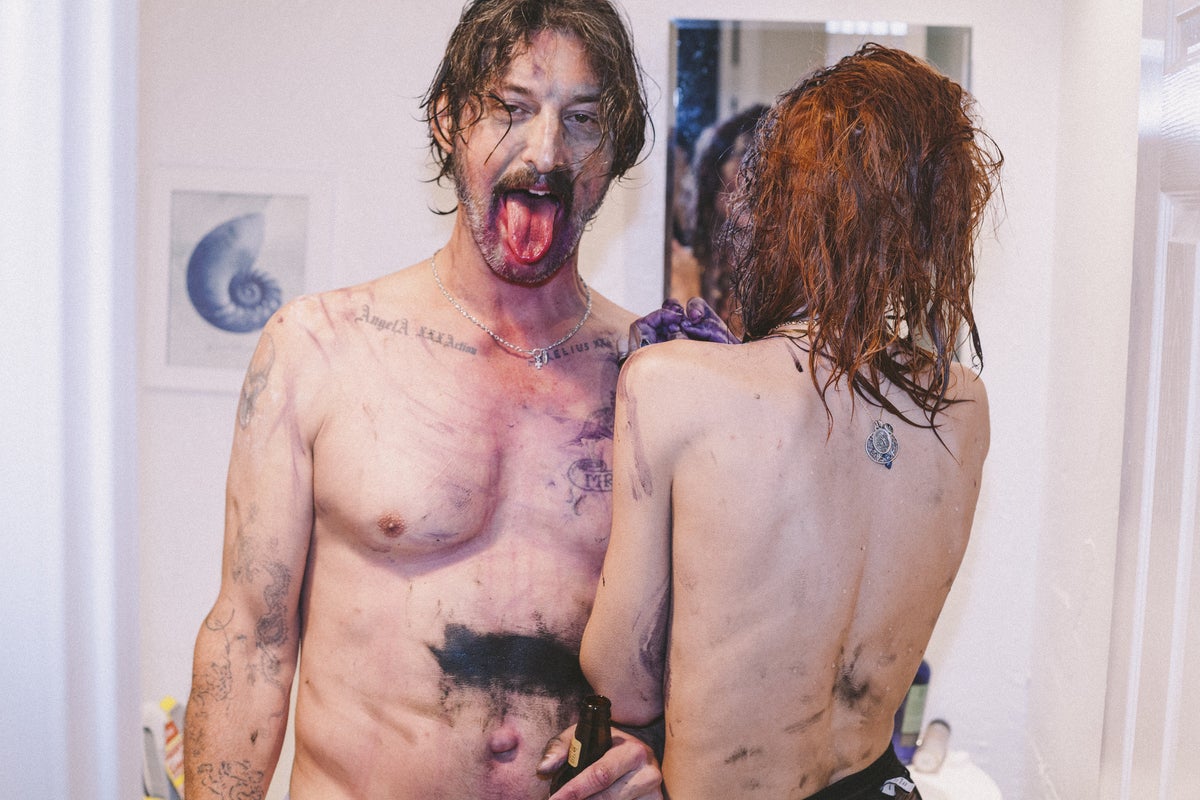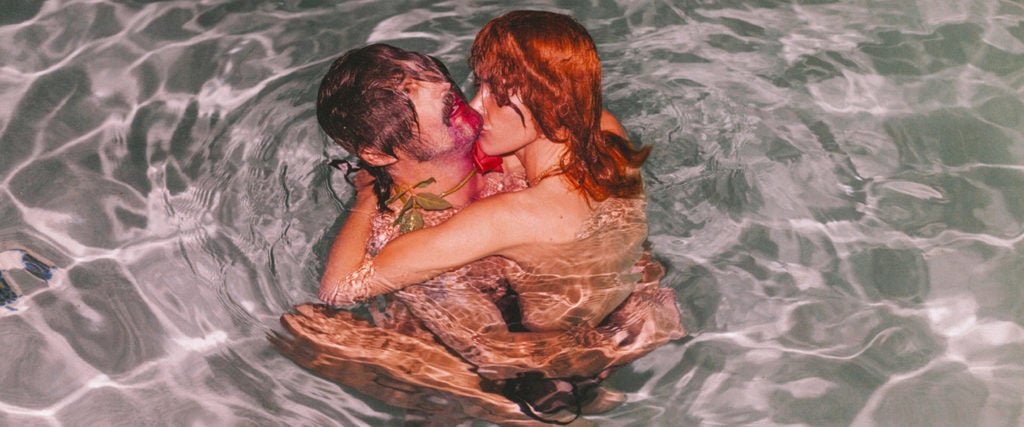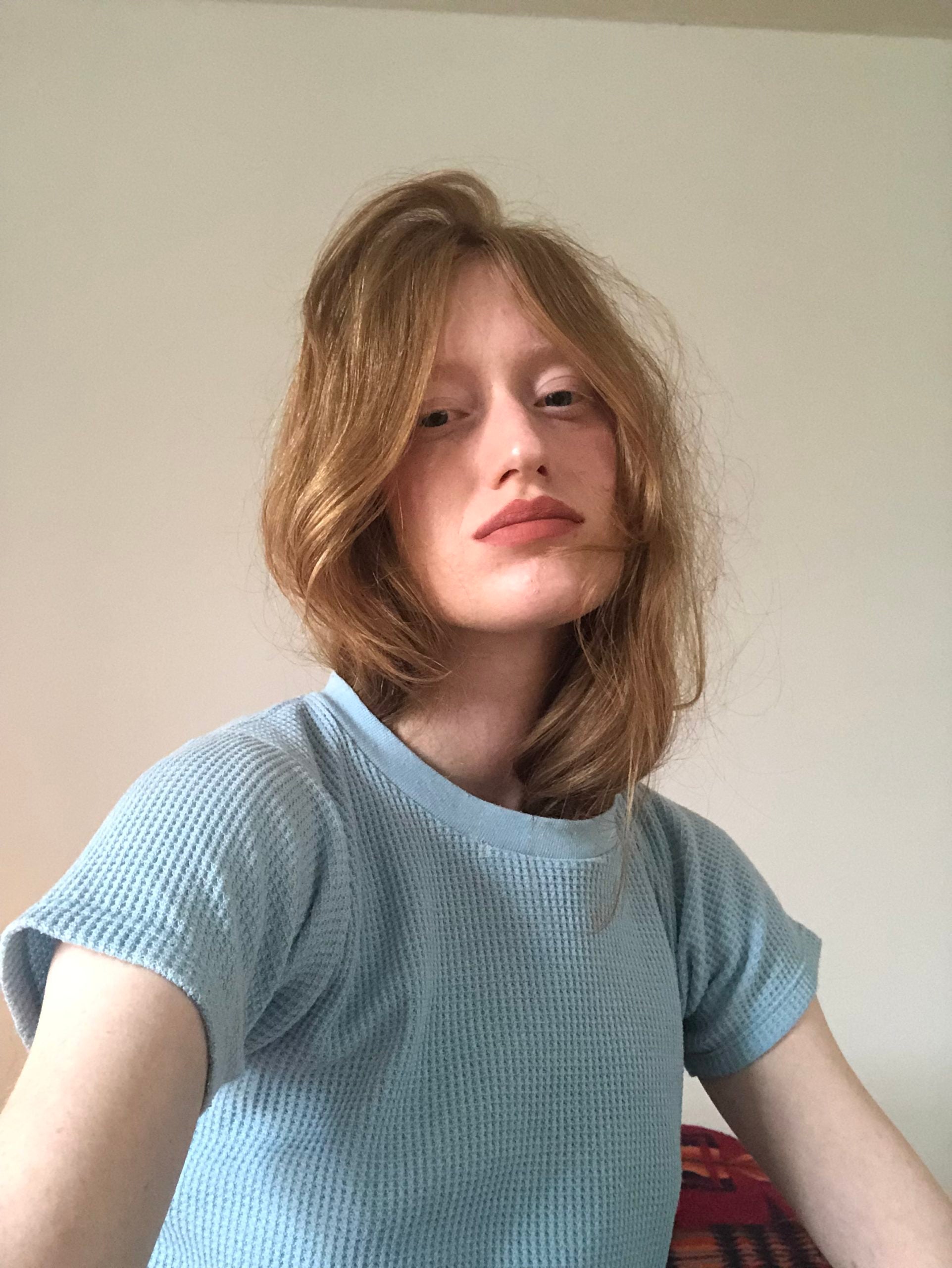It’s March 2016 and Tony Ward, the world’s most famous male model who isn’t Fabio, is thrashing around the choppy aquamarine pool of a rented Palm Springs desert home, trying his best not to drown. It’s golden hour, and though the sun has dipped behind the deep purple silhouette of the city’s highest mountain, its departure has done nothing to abate the inferno-level heat, an annoyance that has kept Ward in the pool for the better part of an hour.
There’s a woman on his back — actress Paz de la Huerta from Enter the Void and Boardwalk Empire — and she’s climbing on top of him, pushing him down into the water as she vies to thrill the photographer I’ve brought along for the ride. We’re here to profile him — a superstar experiencing the pedestrian inconvenience of a midlife crisis — but so far, we’ve gotten more antics than interviews. Earlier, he took a fistful of mushrooms, and he and de la Huerta plastered each other’s bodies with acrid-smelling acrylic paint, a homegrown ritual intended as a psychic funeral for her injured body and his so-called “tumultuous half-life living crisis.” Their relationship to each other — unclear at first — quickly cements when they start kissing in the pool: They’re lovers, hungry to feed off each other’s pain.
At 57, Ward is only about 13 percent less ripped than he was in the 1990s when he became one of the first and best-known male supermodels. He’s covered in hasty tattoos, has a face that’s older than it wants to be, and at the time of our meeting four years ago, was in the midst of divorcing a woman who refused to have sex with him unless it was over Skype. He’s got four children spread across two continents and a couple more ex-wives who he takes care of when he can, and while he still models from time to time, it’s safe to say that business isn’t what it used to be. He’s selling talisman jewelry and T-shirts to feed his family in between shoots, and he’s not entirely convinced he wants to be used as an “object to sell clothing” anymore. So, four years ago when all this was coming to a head, he did what any reasonable man on the precipice of a modeling afterlife would do: High-tail it to the desert to party and sort things out in the morning.
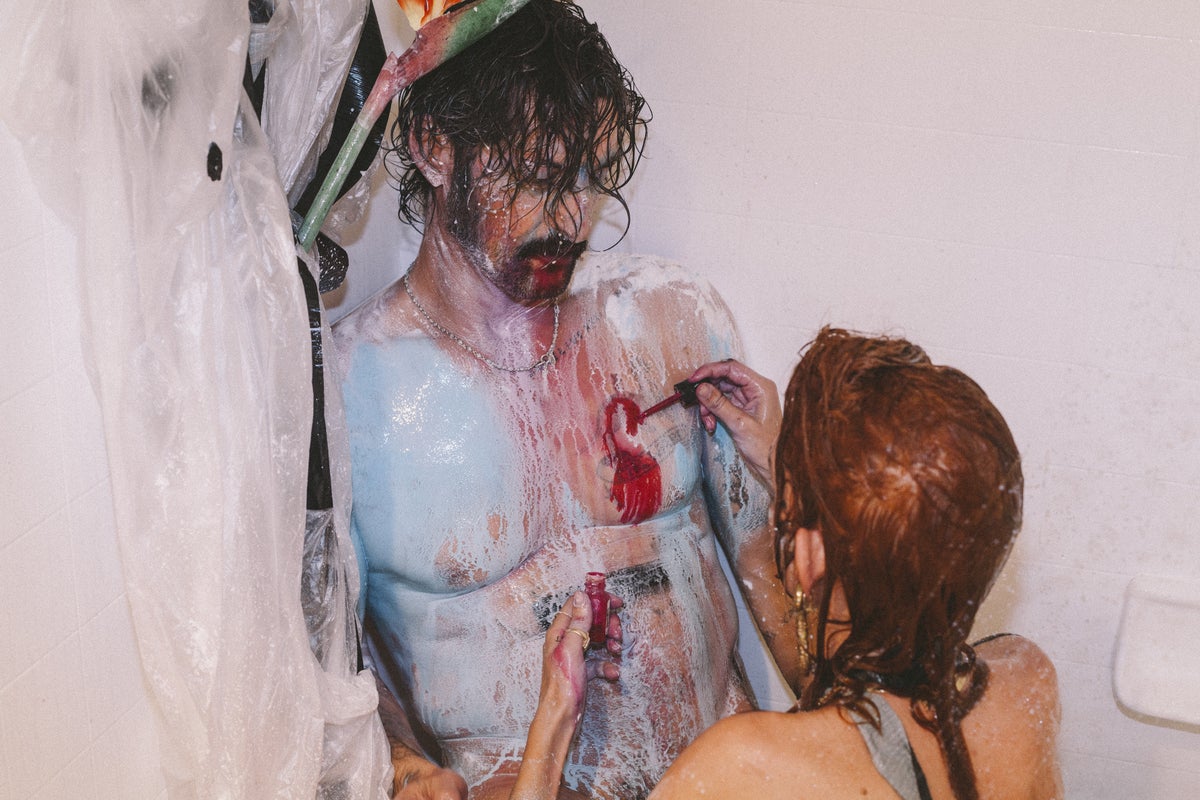
Ward, who IMDb expertly describes as “handsome… and muscular,” began his modeling career in 1981 after being discovered by a scout at West Valley College who thought his phallic nose would be a marketing cash cow. The organ — famously characterized by fetish photographer Rick Castro as “a second dick” — turned out to be exactly that, making its first print appearances in erotic shoots for gay magazines like In Touch and Colt. “My asshole was plastered across every gay boy’s fridge in the 1980s,” he says. “I was the Gay Not Gay refrigerator icon at 22.”
Impressed with his “pizazz,” Castro introduced him to legendary fashion photographer Herb Ritts, who fell in love with his singular look and launched him into superstardom as one of the premier male models of the 20th century. For years, he graced the glossy covers and full-bleed spreads of magazines like GQ and Vogue, posing for brands like Calvin Klein, Chanel, Diesel, Fendi, H&M, Hugo Boss and Dolce & Gabbana, the latter for whom he produced a highly controversial campaign. In it, a black-and-while Ward vice-grips the delicate skin of Linda Evangelista’s face as she turns away from him in an exaggerated pose, half-excited and half-disgusted — a masochistic, assaultive stance which somehow, I’m told, sold a lot of D&G pants. (Lest anyone thinks the photo was real and not staged, Ward assures me that Evangelista was “dripping with excitement” during the shoot.) The image was later banned by The Vatican, much to his delight.
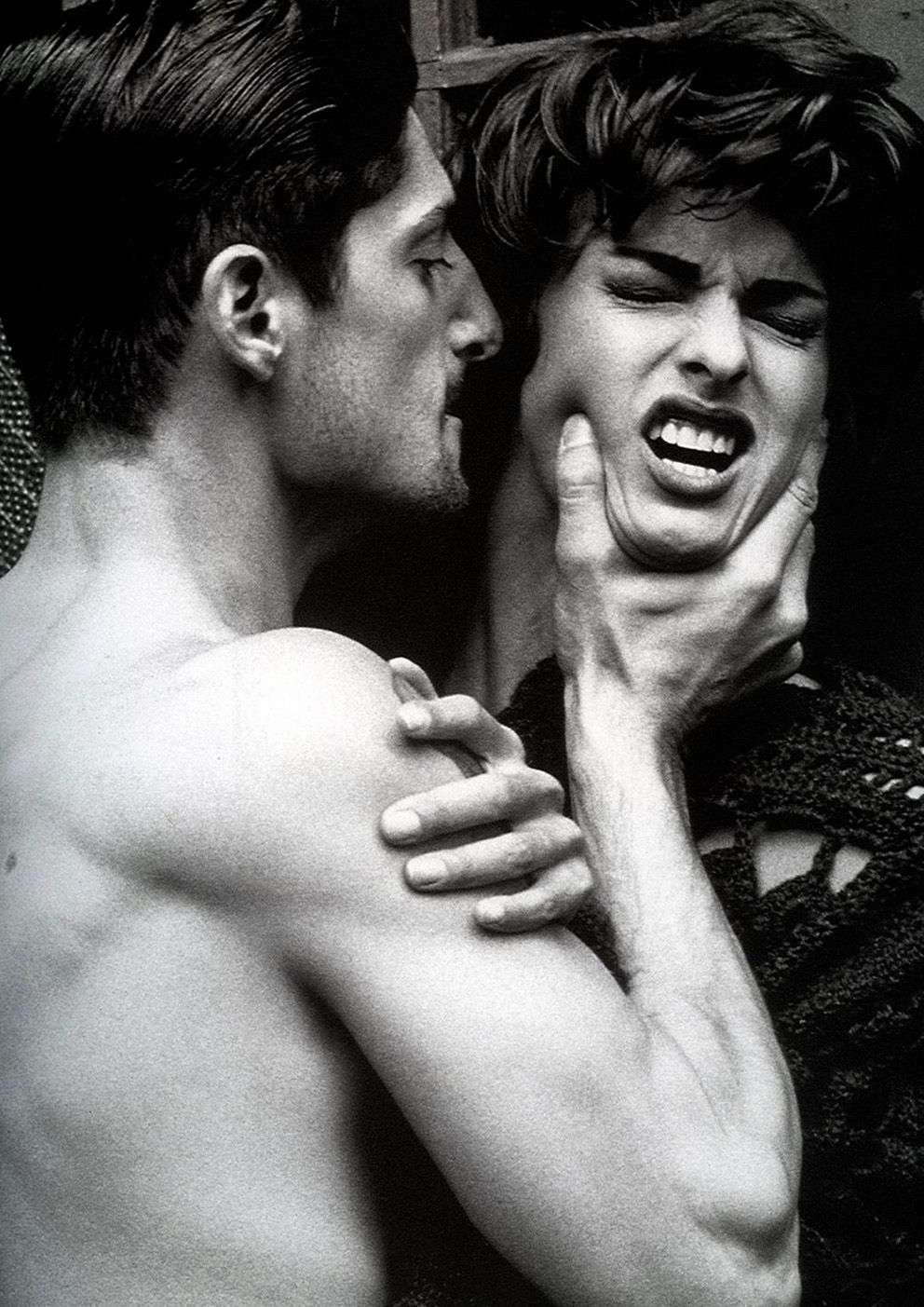
His slow bloom into stardom was turbo-charged in the early 1990s when he met, then subsequently dated, Madonna (the two fell in love after she extinguished a lit cigarette on the skin of his back). He became the leading man in some of her most iconic music videos — “Justify My Love,” “Erotica” and “Cherish,” to name a few — and even showed up in her controversial 1992 book SEX with his nose buried snuggly in between the cheeks of her sacred ass.
He was fashion’s “it guy” for over 30 years, but as he surfs the alternate dimension of his trip in the solid heat of the desert, he admits he’s not so sure he wants to be anyone’s guy at all. Right now, he tells me as a cooling breeze from the oncoming darkness makes his eyes roll back in his head, he just wants to be somewhere else.
Making out with a paint-covered actress in a pool is one way to wind down a decades-long modeling career, but as Bruce Hulse, another legendary male model and author of Sex, Love and Fashion: A Memoir of a Male Model explains, it’s hardly the only one. “Good looks don’t last forever, and we all know it,” he says. “Pretty much everyone of us knows a handful of guys who went from being big stars one day to not being able to book a job the next. So, the question we’d always ask each other on set was, ‘Hey dude, what are you going to do when this gravy train’s over? What’s next after modeling?’”
It’s a valid question in an industry where looks are everything and your career lasts an average of only five or six years. But for male models — who often make up to 75 percent less than their female counterparts — that question holds a different weight. Without the lucrative cash flow and more bountiful opportunities women have, the pressure can be even greater on men to pick up another skill or invest in education and training for a separate, oftentimes far more humble career. “You can’t take care of a family and your responsibilities in life with fucking photographs,” Ward says, this time over a blurry, present-day FaceTime call from a Santa Monica beach. “You might want to find something else to get into.”
As ex-model Edward Siddons explains in an article for Newsweek, male models are often also subject to the same level of sexual harassment, body dysmorphia and rejection female models are, but they usually aren’t taken seriously when they bring it up. And just as is true in the non-modeling world, many of them are subject to the same, restrictive aphorism everyday men are when they speak up about the emotional and physical challenges they face: “Man up.”
That’s another dividing line between male and female models. In Ward’s experience, female models are, like most women, more likely to seek therapy and have the sort of social support to process the things that happen to them during the course of their careers. Men, on the other hand, tend to “bottle things up or put a drug Band-Aid on it.” When they leave the industry, he says, they often “crash and burn.”
“This whole industry is a mind-fuck because people only like you externally,” he says. “That’s the purpose of your presence in any given situation. When you lose that after putting so much effort into how you look, you really have to go through some therapy to release all that. Most guys don’t really do that.”
So then, when their modeling careers die down and it’s time for something else, what do they do?
Hulse, who’s still going at it after 40 years, has seen many men exit the industry, some more gracefully than others. “Guys do all kinds of things after they quit modeling,” he says. “I know a lot who went on to open restaurants, start agencies or become photographers (like me).” He also has three friends who became stunt coordinators, a few who are big-time real estate agents and a couple who went to law or medical school. Hulse’s friend and fellow model John Pearson went into media and started a men’s lifestyle publication called Mr. Feelgood, a product of what he calls a “working-class man thing.”
“I always, always, always had something else going on throughout my modeling career,” Pearson says. “It’s a masculine thing, to need to be able to provide, so I’ve done things like write, clean windows and work in restaurants to make sure I could take care of myself and my family.”
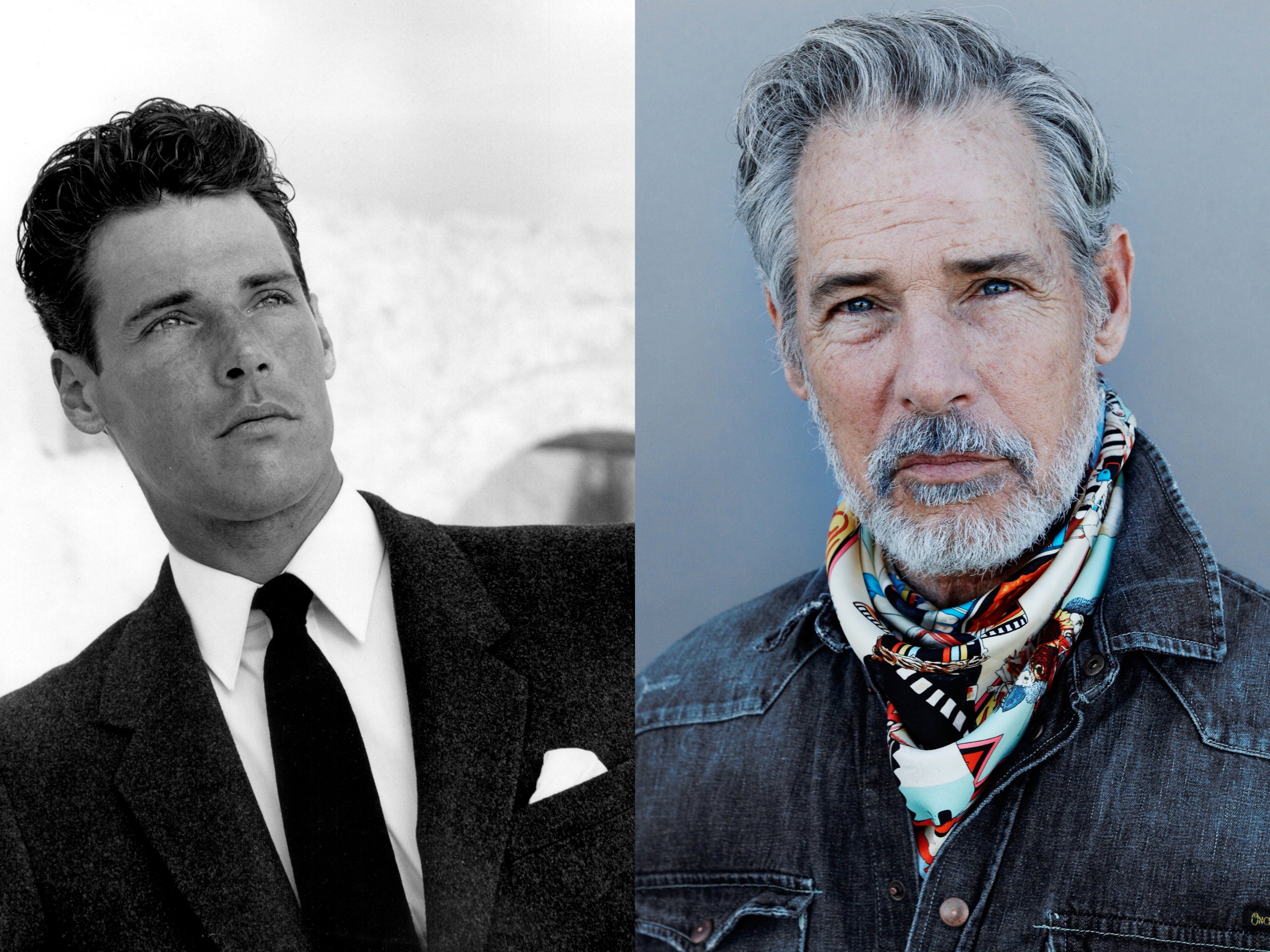
Then, of course, there are the guys who move to Costa Rica and start yoga retreats. Actually, if there’s anything male ex-models have in common in their afterlives, Hulse says it’s a preternatural inclination toward spirituality and esoteric interests whose teachings and practices directly counteract the superficial, unpredictable nature of the fashion world. Whether it’s through yoga, meditation or some sort of silent, macrobiotic self-awareness retreat where they come face-to-face with their inner child, they seem to be on some sort of constant, Zoolander-esque inner quest to “find themselves” — a pursuit made possible by generous paychecks and exposure to different cultures through non-stop travel.
“It’s an unusual thing,” Hulse says. “You’re in this industry where everybody’s good-looking. They’ve been handpicked from around the world, like racehorses. That’s their ‘thing,’ and that’s just the business. A lot of models look at that and say, ‘Okay, but what else is there?’ You just reach this point where you’re sitting in these wild clothes in the hot sun on some beach in the Canary Islands, asking yourself what it all means.”
Hulse, a Cornell Buddhist Studies major, was able to deduce some meaning and purpose through photography, meditation, fatherhood and the domestic bliss of a rare, 26-year-long marriage. But other ex-models, like 34-year-old Oregon native Terron Wood, find theirs in less expected places… places like the Cheesecake Factory.
From 2007 to 2014, Wood enjoyed a long reign as one of the biggest male models in the world. As the face of Polo and a darling of photographer Bruce Weber (who he and number of other models later sued for sexual harassment related to his infamous “breathing exercises”), he worked his way up to a six-figure salary and jet-setting lifestyle, flitting between catwalks and exotic countries with plenty of bare-chested photoshoots with supermodels like Miranda Kerr in-between. As a formerly overweight kid who came from humble beginnings in the small town of Gladstone, Oregon, it felt like a near-constant ride in the world’s most thrilling theme park, and everything was peachy.
That is, until he fell in love. “I’d been avoiding dating to focus on my career, but I fell head over heels for this one girl,” he says. “She kind of took the place of all the work I was doing, and I put all my energy into her.” Unfortunately, it didn’t last — they broke up after 18 months. “I was absolutely devastated and crushed,” he says. “It broke my heart.”
It also broke his hot streak at work. After his breakup, Wood spiraled into a numb species of depression that made him incapable of doing much more than smoke copious amounts of weed and order takeout to his apartment. He’d show up to set, despondent and mute, and barely get through the shoot before dragging himself home to toke up before bed. To make matters worse, he was living in a model house with a number of bright-eyed, fresh-faced younger models whose boundless energy and enthusiasm looked a lot more appetizing to agents and photographers than his deteriorating mental state. “I began to sense that my time had passed,” he says. “It was really unhealthy for me to be around them.”
His experience with Weber began to wear on him, too. Modeling is often about pleasing people, and he wondered if the privileged position his job put him in had interfered with his ability to say no. He started to lose sight of who he was, trying on different hats like “Reiki master,” “yoga teacher” and “actor” before realizing none of his attempts to supplement his deflating modeling career were sticking. Instead, he let his considerable savings dwindle until his bills piled up, unopened and avoided, the final nail in the coffin of what would become a weeks-long, mania-tinged mental breakdown.
In 2014, he took a trip back home to Oregon to ground himself and clear his mind. Days turned into weeks, and then into months, and eventually, it hit him — he wasn’t going back to New York, and he wasn’t going back to modeling. It was time for something new.
The problem was, he had no idea what that “something” could be. He’d been in fashion since he was 18, and like many other models who exit the game without a solid Plan B, he had no money or other skills to show for it. The prospect of starting over — not just in his career, but as a person — was daunting. “I didn’t know what to do with my life,” he says. “I couldn’t just go out and get a job.” He couldn’t ask his friends for help, either. Being away for so long — in an industry where he was constantly on the move — had made it hard to relate to everyday people. The constant flattery and objectification had left him skeptical about what they wanted from him, and he struggled with how to communicate his needs.
“You’re not socialized correctly when you’re a model,” he explains. “You’re always being fawned over. You walk into the room and people are like, ‘Oh, he’s here! How amazing! We’ve been waiting for you!’ They sit you down in a chair and put makeup on you and tell you how pretty you are for hours. Then you’re flown off to another shoot in some exotic location — which you leave the next day — and the cycle just continues. It’s not exactly the best set-up for social success later on.”
Hulse agrees, explaining that because models are used to constant change, they tend to have trouble with relationships. Their entire pace of life is dictated by what’s next — there’s rarely time to stop, slow down and put down roots.
It didn’t help that the few people Wood was close with seemed to subscribe to the belief that male models were, as Josh Sims of the men’s lifestyle and fashion blog FashionBeans puts it, “[smacking] of unappealing traits [like] narcissism, unintelligence and a lack of seriousness.” Their taunts of “Hey, model boy” felt demeaning, and he resented the sardonic tone in their voices when they’d jokingly introduce him at bars and parties as the “handsomest man in Oregon.”
His dad, an interior house painter, offered to help with a job. The two of them spent a couple of years painting houses together, a task for which the old man rewarded him with a cool $100 a day. It was exhausting, erratic work that “sucked” and “was terrible,” but he kept at it — at least he was learning a trade. “I really had to eat humble pie for a while,” he says. “I was used to showing up on set, taking one picture and walking out with $5,000. And instead, I was showing up and busting my ass for eight hours, working for my own dad, getting paint all over me, being tired and hurting my back for $100 a day. But that’s what work is. I had to get used to it.”
For a time, therapy and meditation were his only escapes. Four years in, he decided to put a stop to his routine. He was a social person who’d always enjoyed working in restaurants before he started modeling, so he applied to the only place he could think of that felt like it really fit him — the Cheesecake Factory in Portland.
“I found joy in real-life interactions with people and having to create true connections,” he says, explaining that his Cheesecake Factory co-workers have become somewhat of an extended family to him. “Once I started to fit in there, I let go of that old way of how I felt about things and how entitled I was. I realized that the people I made friends with didn’t actually want anything from me. It totally took away my ego, and I was able to retrain myself in the art of relationships and communication. It really did take me working as a server there to learn how to do these things again.”
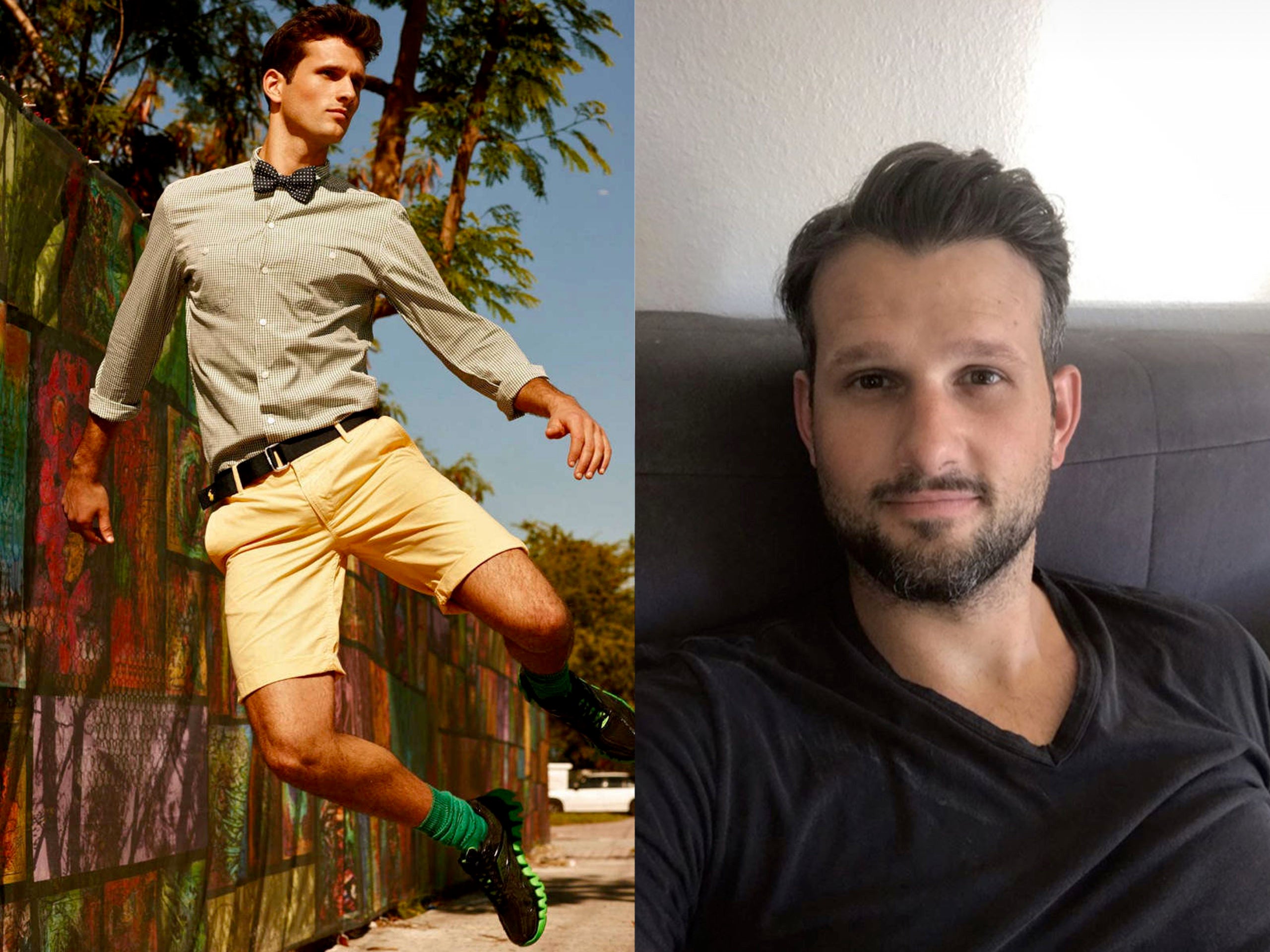
Wood works full-time at the Cheesecake Factory now, and says he’s never been happier. He makes good money — $300 a night, even during the pandemic — and says the most exciting thing for him, even after a life of adventure and luxury, is relishing in the little moments that make life worth living. It’s the feeling of presence, of having come full circle.
Back in the pool in Palm Springs, Ward has to come down before he comes full circle. I can tell he’s peaking as de la Huerta paws at him, calling his name in pouty coos as she shoves him underwater in order to launch herself skyward from his shoulders while he plays life raft, limply, below. At times, she drags him underwater for what seems like hours, holding him there as she poses for the camera. He doesn’t try to fight it.
“You can do anything you want to me,” Ward tells me later. “As long as people want to pay me ridiculous amounts of money to photograph me — which is so stupid — I’m down. But I get lost in there. I’m not exactly sure what I’m supposed to think of myself.”
After all, a vast majority of his life is spent taking on whatever identity the photographer or director tells him to have — angry boyfriend, sultry romance guy, tender beach babe who sells shirts by being shirtless. The public has also given him an identity — cigarette-smoking bad-boy, jet-setting sex god a la Pirates of the Caribbean-era Johnny Depp. “I don’t actually feel like I have an identity,” he laughs from the pool, coughing chlorine out of his lungs as small rivers of paint ooze off his skin into the water.
A lot of models don’t, he tells me. The tension between chameleonic people-pleasing and trying to parse out who they are is real, and there are few times in which that friction is stronger than at the end of their career, when the reflection staring back at them in the mirror changes from somebody to, well, anybody.
For Hulse, however, that moment is still to come. Having modeled for longer than you’ve been alive, he’s seen thousands of men enter and exit the industry, with only a few well-anchored, long-haul guys like himself refusing to give up their seat at the table. Nevertheless, he, like any smart model, has spent years preparing for his modeling afterlife, honing in on passions like photography and chasing side-careers in anticipation for the day the phone stops ringing. “Right after my first modeling job, I picked up a camera,” he says. “I started taking pictures, doing model tests, doing headshots. That eventually led to a private agent, and now I’m an official photographer. Me and another male model also managed a group of male model UFC fighters for a time. You’ve always got to be looking for a side hustle so you’re not just sitting around waiting for the phone to ring.”
His phone continues to buzz, but he still considers himself to be in the sunset phase of his career, on the precipice of an afterlife that’s just beginning. He’s been happily married for 26 years, and says his biggest joy has been raising his kids with his wife and being part of his local community. “After my days of getting on plane after plane, I can’t tell you how many hotel rooms I woke up in and had no idea where I was, how I got there and where I was going to next,” he says. “I don’t miss those days. I was always like a kid from Philly that used to go down to the shore in summertime and surf with my buddies. And that’s who I am. I’m happiest in my home with my friends going down to the beach. The jet-setting lifestyle isn’t all that it’s made out to be.”
That doesn’t mean it’s easy to give up, though. Toweling himself off and taking a swig of his fifth or sixth Stella of the evening, Ward pauses, turns to me, and admits he wishes things were still the way they were back when he was Madonna’s plaything, when everyday was another photoshoot, another adventure. But then, in a moment of sober clarity, he reconciles it in his mind in real time.
“This will pass,” he says. “All the good shit, all the bad shit, everything changes. Whatever I’m feeling right now, I know that it’s going to go away. Sometimes it’s deep and it hurts. It’s debilitating, you feel like you don’t want to wake up in the morning or do anything ever again. I think I’ve been depressed a couple of times in my life, pretty hard depressed, but I just don’t let that get me. Every time I feel like giving up, I literally just tell myself to shut up. That’s how I survive.”
So far, he has. When I catch up with him over the summer, he’s grounded and about 103 percent more content with life than he was in 2016. His family is happy, he’s working on a number of film projects with his friends and just letting life happen. “I’m really grateful for what I have,” he says. “I’m here, I’ve got my family, I’m out on a beach breathing this beautiful ocean air — really, what’s better than that?”
